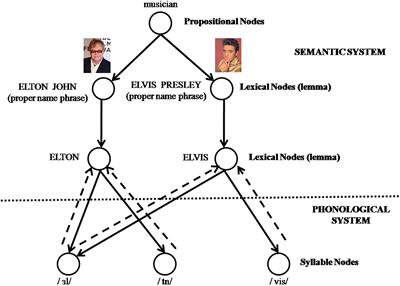
Medicine by Alexandros G. Sfakianakis,Anapafseos 5 Agios Nikolaos 72100 Crete Greece,00302841026182,00306932607174,alsfakia@gmail.com,
Ετικέτες
Τετάρτη 26 Φεβρουαρίου 2020
Aging Effects on Phonological and Semantic Priming in the Tip-of-the-Tongue: Evidence From a Two-Step Approach
Aging Effects on Phonological and Semantic Priming in the Tip-of-the-Tongue: Evidence From a Two-Step Approach:
 The mechanism underlying the age difference in spoken word production remains controversial. We used a two-step approach proposed by Gollan and Brown (2006) to investigate the semantic and phonological retrieval deficits when tip-of-the-tongue occurs in young and older adults. Importantly, we controlled the inhibition ability in both older and young groups. In experiment 1 with a people pictures naming task, older adults produced more TOTs than young adults, and they suffered from phonological retrieval deficit rather than semantic retrieval deficit in speaking. In experiment 2 with a priming paradigm, participants were presented semantically related or phonologically related names before target pictures, which formed semantic or phonological priming conditions for lexical access. Compared with young adults, older adults showed a greater effect of phonological priming on decreasing TOTs occurrence. For semantic retrieval deficit, older adults exhibited a smaller phonological facilitation effect and a larger semantic interference effect than young adults. For phonological retrieval deficit, older adults presented a larger phonological facilitation effect in the first-name related priming condition than the first-syllable related priming condition, whereas young adults showed similar facilitation effects between the two phonological priming conditions. Our findings provide consistent evidence for the transmission deficit hypothesis, and highlight that aging affects bidirectional connections between semantic and phonological nodes in speech production.
The mechanism underlying the age difference in spoken word production remains controversial. We used a two-step approach proposed by Gollan and Brown (2006) to investigate the semantic and phonological retrieval deficits when tip-of-the-tongue occurs in young and older adults. Importantly, we controlled the inhibition ability in both older and young groups. In experiment 1 with a people pictures naming task, older adults produced more TOTs than young adults, and they suffered from phonological retrieval deficit rather than semantic retrieval deficit in speaking. In experiment 2 with a priming paradigm, participants were presented semantically related or phonologically related names before target pictures, which formed semantic or phonological priming conditions for lexical access. Compared with young adults, older adults showed a greater effect of phonological priming on decreasing TOTs occurrence. For semantic retrieval deficit, older adults exhibited a smaller phonological facilitation effect and a larger semantic interference effect than young adults. For phonological retrieval deficit, older adults presented a larger phonological facilitation effect in the first-name related priming condition than the first-syllable related priming condition, whereas young adults showed similar facilitation effects between the two phonological priming conditions. Our findings provide consistent evidence for the transmission deficit hypothesis, and highlight that aging affects bidirectional connections between semantic and phonological nodes in speech production.

Αναρτήθηκε από
Medicine by Alexandros G. Sfakianakis,Anapafseos 5 Agios Nikolaos 72100 Crete Greece,00302841026182,00306932607174,alsfakia@gmail.com,
στις
10:11 μ.μ.

Ετικέτες
00302841026182,
00306932607174,
alsfakia@gmail.com,
Anapafseos 5 Agios Nikolaos 72100 Crete Greece,
Medicine by Alexandros G. Sfakianakis,
Telephone consultation 11855 int 1193
Εγγραφή σε:
Σχόλια ανάρτησης (Atom)

Δεν υπάρχουν σχόλια:
Δημοσίευση σχολίου